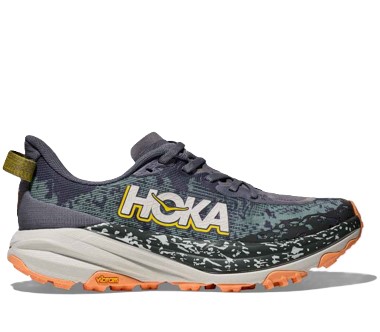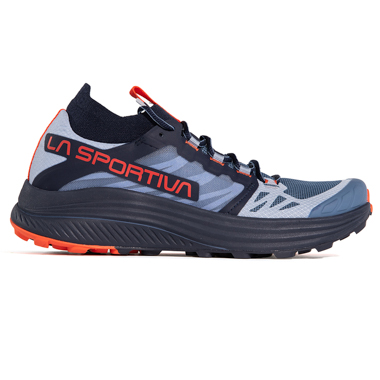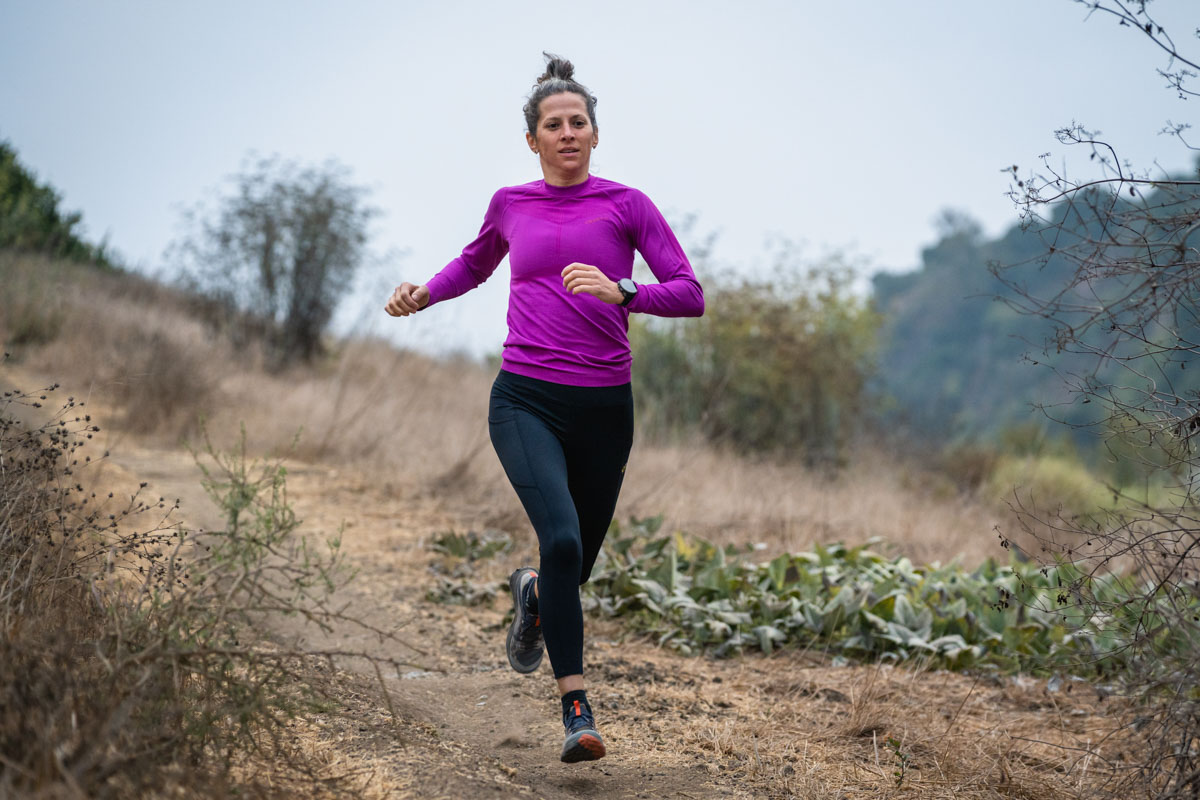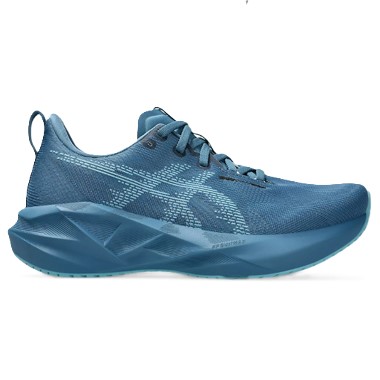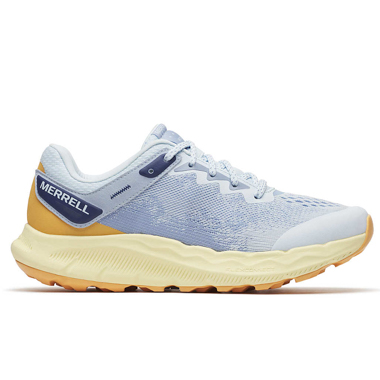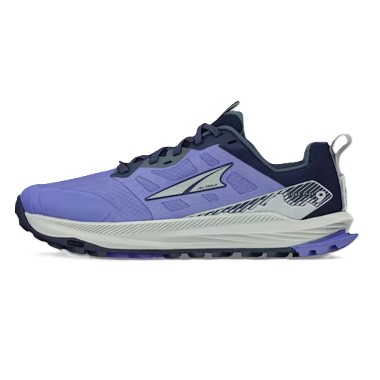
iRunFar’s Meghan Hicks and Hannah Green test trail shoes outside of Silverton, Colorado. Photo: iRunFar/Eszter Horanyi
Like almost all outdoor and athletic gear, running shoes have historically been developed by and for men. The best running shoes for women were unisex models that ignored the unique physiology of women’s bodies. Studies on female athletes have only started to happen relatively recently, and despite the increased offerings for women, the “shrink it and pink it” approach to designing gear for women is still alive and well today. Yet, we know that women have different skeletal and muscular builds, biomechanics, running gait, needs, and preferences than men. It makes sense that brands uniquely create running shoes for women, and we’re excited to see more options available yearly.
As with our other running shoe guides, we acknowledge that there is no one best running shoe for any runner. Yet, with hundreds of shoe styles, it isn’t easy to know where to start or how to stay on top of constantly evolving running shoe designs and technology. For this guide, we researched the running shoe market and combed through our collection of feedback for all of the shoes we’ve tested, focusing our attention on what our women-identifying testers had to say.
Ultimately, our testers chose the Hoka Speedgoat 6 as their best trail shoe option and the Asics Novablast 5 as their favorite road running shoe. We also loved the new La Sportiva Levante, which was designed specifically for women with feedback from the brand’s athletes.
Read our recommendations for choosing and frequently asked questions about running shoes below to learn more. You can also explore our research and testing methodology and view our glossary of running shoe terminology.
Best Running Shoes for Women
- Best Trail Running Shoes for Women: Hoka Speedgoat 6
- Best Trail Running Shoes for Women — Runner-Up: La Sportiva Levante
- Best Road Running Shoes for Women: Asics Novablast 5
- Best Road-to-Trail Shoes for Women: Merrell Antora 4
- Best Zero-Drop Running Shoes for Women: Altra Lone Peak 9

Women’s running shoes continue to advance from the era of “pink it and shrink it.” Photo: iRunFar/Eszter Horanyi
Best Trail Running Shoes for Women: Hoka Speedgoat 6 ($155)
- It has more of a locked-in feel than the previous version
- Great traction
- Light and nimble for a maximal cushion shoe
Cons:
- Reduced ground feel
- Some may not like the addition of more upper structure
With the new Hoka Speedgoat 6, the brand continues the legacy of one of the most well-loved trail shoes on the market. It’s an excellent all-arounder that fits a variety of foot shapes, and the Vibram outsole with Traction Lugs provides outstanding traction on a variety of surfaces.
There’s a reason this shoe shows up in numbers at the start of nearly any ultra in the world. The women’s version comes in regular and wide versions, with the wide version being the same width as the men’s shoe. This width better accommodates women’s feet, which tend to be narrower than men’s.
The most significant difference between the previous version of this shoe, the Hoka Speedgoat 5 (review), and this one is the return of the more structured feel the shoe is known for. Many people compare this shoe more to the Hoka Speedgoat 4 (review) than the Speedgoat 5 and appreciate the upper’s more locked-in feel and structure. This comes from the internal strapping that hugs the foot. The upper is also far less stretchy than the previous version.
The rest of the shoe remains essentially the same, and the toebox is relatively roomy. The drop has increased from 4 to 5 millimeters, but it’s still well within the range that will work for most people. The 38-millimeter stack height at the heel makes this a maximally cushioned shoe that will protect your feet over the long haul.
While this shoe feels light and nimble for what it is, it still doesn’t provide the ground feel of shoes with a lower stack height. The single-density foam has been upgraded from the previous version and is slightly lighter. We also found it to be bouncier compared to earlier versions, and the rocker improves the ride of this shoe.
You can read more about our impressions of this shoe in our in-depth Hoka Speedgoat 6 review. You can also learn more about the history of Karl Meltzer’s creation and impact on the Hoka Speedgoat line.
Claimed Weight: 8.2 ounces (232 grams) | Stack Height: 35/30 millimeters (heel/toe) | Drop: 5 millimeters | Lug Depth: 5 millimeters
Shop the Hoka Speedgoat 6
iRunFar’s Alli Miles tests a pair of Hoka Speedgoat 6 on smooth California trails. Photo: iRunFar/Eszter Horanyi
Best Trail Running Shoes for Women — Runner-Up: La Sportiva Levante ($155)
- Lightweight
- Comfortable on roads and trails
- Built-in gaiter keeps debris out
Cons:
- Runs small
- Lacks traction on loose surfaces
- Built-in gaiter can chafe
The La Sportiva Levante is part of the brand’s foray into creating shoes that can cross between trails and roads and perform on the surfaces that many trail runners find themselves on most of the time: gravel paths, smoother trails, and the occasional bit of pavement. Known for traditionally making shoes designed for rugged mountain travel rather than fast trail running, La Sportiva combines its mountain knowledge with a rocker and reduced weight to create a more runnable shoe.
La Sportiva worked directly with its women athletes to create this shoe, and the result is a durable, rockered shoe that is at home on many types of surfaces. We had no qualms moving from trail to road to gravel paths, and we found it to be more flexible than many other shoes from the brand. The XFlow super foam midsole provides cushioning without being squishy, and we were happy to take this shoe out on runs up to 20 miles.
The brand claims this midsole provides 15% more cushioning and 18.5% more rebound while being 18% lighter than traditional EVA foams. While these numbers are hard to confirm, we were impressed with the cushion it provided, as well as its reasonable stack height, which didn’t compromise ground feel.
The shoe’s claimed weight of 7.4 ounces (210 grams) for a women’s size 7 makes it very light for its cushioning and support. The 30-millimeter stack height at the heel and 6-millimeter drop feel fairly middle-of-the-road and can work for many people.
We found this shoe to be reasonably narrow, a hallmark trait of shoes from La Sportiva, but the toebox was wider than other shoes from the brand. The built-in gaiter is less prominent than many other attempts at the genre, and we appreciated the protection it provided. One of our testers experienced the gaiter rubbing on her Achilles the first couple of runs in the shoe, but the issue seemed to have resolved itself.
While this shoe won’t handle the highly technical trails that many other shoes from the brand can, this is a great all-around everyday shoe that will hold its own on most terrain. The 3.5-millimeter lugs don’t feel too sticky or unstable on pavement, and the outsole features La Sportiva’s FriXion White compound, which we found to grip well on a variety of surfaces.
As with many shoes from the brand, this one runs a bit small, and you’ll want to size up a half a size.
You can read more about this shoe in our in-depth La Sportiva Levante review.
Claimed Weight: 7.4 ounces (210 grams) | Stack Height: 30/24 millimeters (heel/toe) | Drop: 6 millimeters | Lug Depth: 3.5 millimeters
Shop the La Sportiva LevanteBest Road Running Shoes for Women: Asics Novablast 5 ($150)
- Highly cushioned
- Springy
- Comfortable daily trainer
Cons:
- Poor traction in wet conditions
Our main tester called the Asics Novablast 5 “one of the most enjoyable daily trainers I’ve worn in a while.” They are a great everyday shoe for logging miles, whether you’re running purely for exercise or training for a race. This shoe excels in its versatility. We found that it performed equally well at easy runs as it did during light workouts. While not a race shoe or a faster workout shoe, it’s a great option when you want to walk out the door and log some miles. The midsole offers a smooth and bouncy ride, and after more than 100 miles, didn’t show any signs of packing out. Our tester found that after her long runs, her legs felt fresher than expected. There’s enough cushion for double-digit mileage days while enough responsiveness for strides and light tempo efforts. The 8-millimeter drop should work for most people.
The upper features an engineered jacquard mesh material that we found quite breathable and comfortable. While most of the foot locked down adequately, our tester found that her heel moved around unless she used the heel-lock lacing technique. The outer includes rubber zones with exposed sections of midsole in between. This provides plenty of flexibility in the shoe and allows for a natural stride throughout the various parts of the gait. The brand claims that it used a trampoline for inspiration for the outsole design to increase its overall energy return. While there is a fair bit of rubber on the outsole, we still found that the shoe lacked traction on slippery surfaces, whether on trail or the road. We’re not sure if this is because of the rubber compound or the zoned outsole design.
While this isn’t a shoe to take on steep or technical trails, it can handle gravel paths and dirt roads. Overall, it’s a great workhorse of a shoe that will stand up to mile after mile of use.
Claimed Weight (U.S. women’s 7): 7.9 ounces (225 grams) | Stack Height: 41/33 millimeters (heel/toe) | Drop: 8 millimeters
Shop the Asics Novablast 5Best Road-to-Trail Shoes for Women: Merrell Antora 4 ($130)
- Comfortable upper
- Versatile
- Great value
Cons:
- Doesn’t handle technical or steep trails well
The Merrell Antora 4 is an excellent all-arounder of a shoe that is equally as comfortable on pavement, dirt, and gravel roads, and mellow trails. It’s perfect for getting out the door to log some miles on mixed surfaces when you don’t want to think too hard about shoe choice. We found it filled the niche of a bop-around-the-neighborhood shoe for leaving the house on pavement, hitting up some urban trails, and coming home on empty gravel roads, or some combination of the above. This version of the shoe received some key upgrades from the previous, including a slightly narrower fit throughout the toebox. The new upper and padded tongue make for an incredibly comfortable fit. The shoe has fewer TPU overlays around the midfoot than the previous version, making it feel a bit less structured. This improves the comfort of the shoe, but also reduces its lateral stability, which is apparent if you try to take these shoes on burlier trails.
While the Antora 4 is a bit narrower than other shoes from the brand, which generally have more roomy shoes, it still provides plenty of space for the foot. More noticeable than the narrowness of the fit is the narrowness of the midsole and outsole. On one hand, it makes the shoe feel relatively nimble and light, but it also makes it feel tippy on off-camber or technical terrain. The EVA midsole provides a decent amount of protection and springiness, though it’s not a shoe for long distances. Realistically, it’s perfect for runs of 10 miles or less.
The outsole has 3-millimeter lugs that provide a reasonable amount of grip on dirt without feeling overbearing on pavement or other hard surfaces. The lug depth has been reduced from the previous version of the shoe, putting it now more in the hybrid shoe category rather than a pure trail shoe.
Overall, this is a great shoe for everyday running and use. The colorway and aesthetic make it workable for more casual wear as well as running, and it doesn’t feel out of place on a run, walk, or while doing errands.
You can read more about this shoe in our in-depth Merrell Antora 4 review.
Actual Weight (U.S. women’s 8.5): 7.8 ounces (220 grams) | Stack Height: 29 millimeters | Drop: 8 millimeters | Lug Depth: 3.0 millimeters
Shop the Merrell Antora 4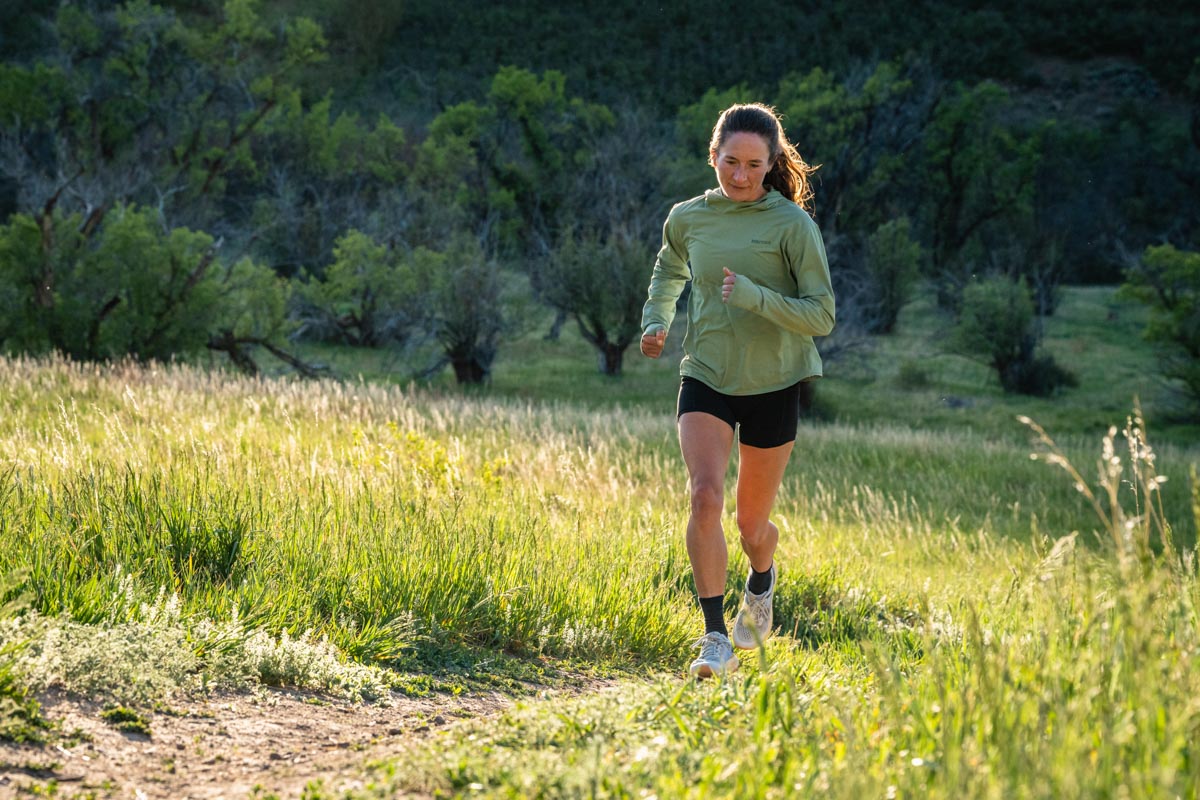
The Merrell Antora 4 can handle smooth trails, dirt roads, and pavement with ease. Photo: iRunFar/Eszter Horanyi
Best Zero-Drop Running Shoes for Women: Altra Lone Peak 9 ($140)
- Full-length rock plate
- Great ground feel
- Great durability
Cons:
- Zero-drop isn’t for everyone
The Altra Lone Peak 9 is the newest iteration of the brand’s most popular zero-drop trail shoe. Year after year, Altra doesn’t change a lot with this shoe, resisting the urge to fix what isn’t broken. While this version of the shoe gets an upgraded midsole foam in the form of the brand’s proprietary Ego foam, which is lighter than before, it maintains its Original Footshape design, which results in the wide and roomy toebox that the brand is known for.
The upper features a 100% recycled ripstop material that is incredibly durable and can withstand abrasion from rocks and other obstacles on the trail. The overlays don’t have any stitches to reduce the chance of friction and hotspots. The toe bumper is bigger than the previous version of the shoe, increasing the durability of the upper and providing extra protection against stubbed toes on rocks.
While the stack height of the shoe doesn’t put it anywhere near the cushioned shoe category, it has a full StoneGuard insert that protects against rocks and uneven trails. The midsole foam is plenty comfortable and flexible to provide a natural-feeling stride. Since there’s no rocker to this shoe, it doesn’t run like many other trail shoes, but its unique combination of features provides a certain nimbleness on the trail not seen in many other trail shoe options. The MaxTrac outsole doesn’t offer quite the same grip as Vibram does, but it’s more flexible and sticks to most surfaces well enough.
It’s worth noting that zero-drop shoes can be difficult to get used to and cause injury if you’re used to running in higher-drop shoes. It’s worth incorporating these into your running shoe cycle gradually to build up the lower leg strength needed to stay injury-free.
You can read more in our in-depth Altra Lone Peak 9 review.
Actual Weight (U.S. men’s 9): 10.3 ounces (293 grams) | Stack Height: 25 millimeters | Drop: 0 millimeters | Lug Depth: 3.8 millimeters
Shop the Altra Lone Peak 9Comparing the Best Running Shoes for Women
| SHOE | PRICE | WEIGHT | DROP |
| Hoka Speedgoat 6 | $155 | 8.2 ounces | 5 millimeters |
| La Sportiva Levante | $155 | 7.4 ounces | 6 millimeters |
| Asics Novablast 5 | $150 | 7.9 | 8 millimeters |
| Merrell Antora 4 | $130 | 7.8 ounces | 8 millimeters |
| Altra Lone Peak 9 | $140 | 10.3 ounces | 0 millimeters |

The best way to find a shoe that fits, whether your foot is narrow, average, or wide, is to visit your local running shop. Photo: iRunFar/Eszter Horanyi
Glossary for Running Shoes for Women
- Upper: The top of the shoe, including the entirety of the shoe above the sole.
- Midsole: A layer of foam that connects a shoe’s upper to the shoe’s outsole.
- Outsole: The exposed material on the bottom of a shoe that makes contact with the ground. It generally includes a rubber or rubber-like compound, and sometimes, parts of the midsole foam are exposed.
- Rock Plate: A layer of deformation-resistant material, whether a plastic sheet, carbon plate, or something else, that sits between the outsole and the sock liner. It aims to protect the bottom of the foot from rocks, roots, and other trail inconsistencies. Rock plates vary in length and may cover the entire foot or just the forefoot.
- Lugs: The protrusions of material on the bottom of an outsole. While road running shoes often have minimal lugs, trail shoes generally have three- to six-millimeter-deep lugs.
- Toebox: The front of the shoe surrounding the ball of the foot and toes.
- Last: The mold that companies create a shoe around. Some brands create women-specific lasts to take into account differences in foot anatomy.
- Stack Height: The maximum amount of shoe material between the foot and the ground.
- Heel-to-Toe Drop: The height difference (measured in millimeters) between a shoe’s heel and forefoot. Also called “offset” or “drop.”
- Arch Profile: The amount of your foot that touches the ground when standing. Knowing your arch profile can help you understand how your foot absorbs impact when you run, including pronation and supination, and what types of injuries are common to each arch type.
- Pronation: The natural inward collapse of the foot’s arch as it absorbs and distributes impact during running or walking.
- Overpronation: When the arch’s inward collapse exceeds the normal range.
- Supination: When the arch barely collapses and the outside of the foot absorbs the impact while running or walking. Also called underpronation.
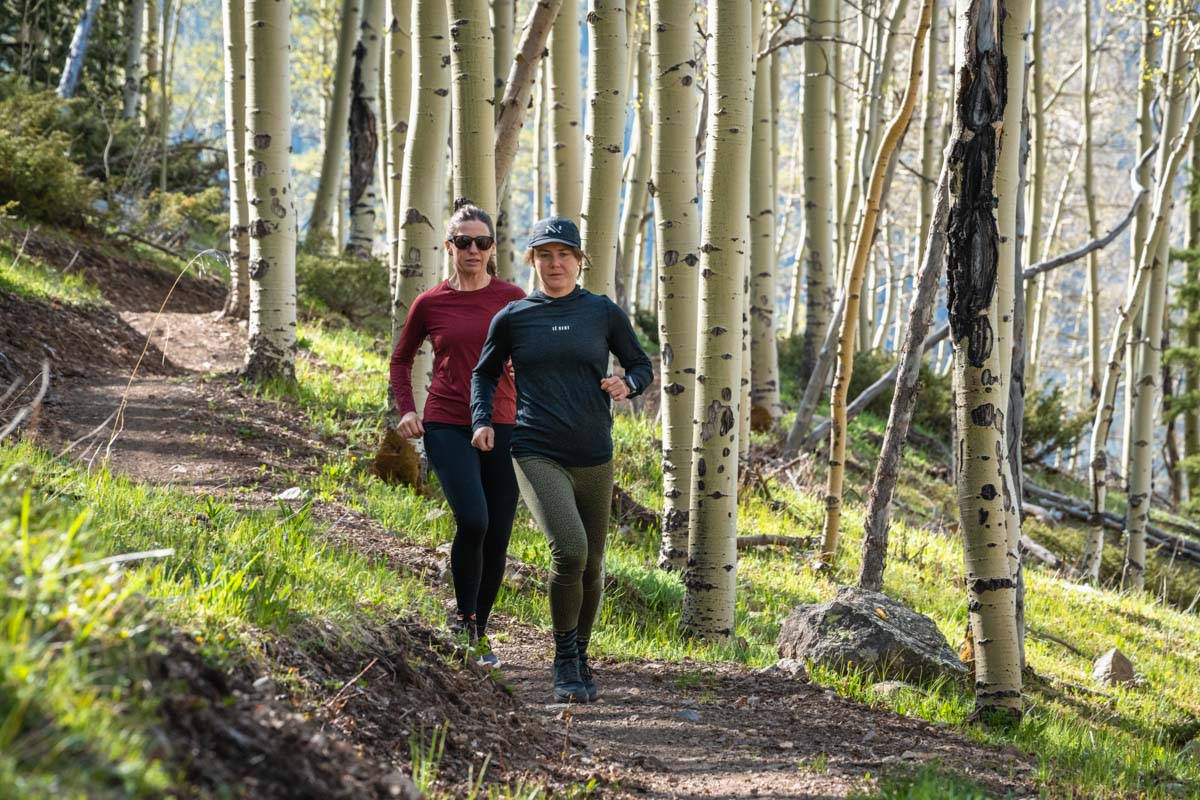
Women’s feet tend to be narrower than men’s, and shoe companies are starting to accommodate them. Photo: iRunFar/Eszter Horanyi
How to Choose Running Shoes for Women
Road Versus Trail Shoes
The best running shoes for women are simply the ones that are the most comfortable for your specific feet and running needs. Trail shoes and road shoes have several distinct differences between them, and you’ll want to get a pair that allows you to run where you want to run safely and comfortably.
Road shoes, like our favorite, the Asics Novablast 5, have smooth outsoles and are meant for pavement. They are generally lightweight and breathable, with minimal lugs on the outsole. Trail shoes, including our favorite, the Hoka Speedgoat 6, will have beefy lugs on the outsoles for gripping natural surfaces like rocks, mud, and dirt. Trail running shoes sometimes also have additional features like rock plates and a burlier upper to protect your feet from rocks on the trail.
If you primarily run on the roads, trail shoes are probably overkill — they’ll feel too clunky or sticky. Taking road shoes onto the trails will sacrifice grip and likely compromise the shoe’s durability.
If you run on both roads and trails throughout the year, we recommend having at least one pair of road running shoes and a dedicated pair of trail shoes. There are several options of shoes that will run comfortably on pavement while still being able to grip on trails, including the La Sportiva Levante and the Merrell Antora 4.
Fit
To choose the right running shoe size, measure the length of your foot in inches and then size up a half to full size. When you put the shoe on, there should be about a thumb’s width of space between the end of your longest toe and the end of the shoe. While slight differences exist between brands, most shoe lengths are fairly standardized.
A good fit will allow your toes to splay and wiggle some, but keep your feet from sliding around inside the shoe. Some shoes, like the La Sportiva Levante, run a bit small, and we recommend sizing up half a size.
You’ll also want to know the width of your foot. You don’t want any part of your foot hanging off the midsole. Many shoe brands — like Hoka, Brooks, and New Balance — offer narrow- and wide-width models of certain shoes to fit a wider range of foot sizes and styles. The wide sizing option of Hoka shoes, including the Hoka Speedgoat 6, is the same width as the standard men’s shoes.
Shoe fit also has a strong subjective component. Some people like their shoes to fit more snugly for precision control on trails, while others want plenty of space around all parts of their feet. The Altra Lone Peak 9 has a wider toebox than the other shoes in this guide. The best way to determine how you like shoes to fit is to try on several different types and see what works for you.
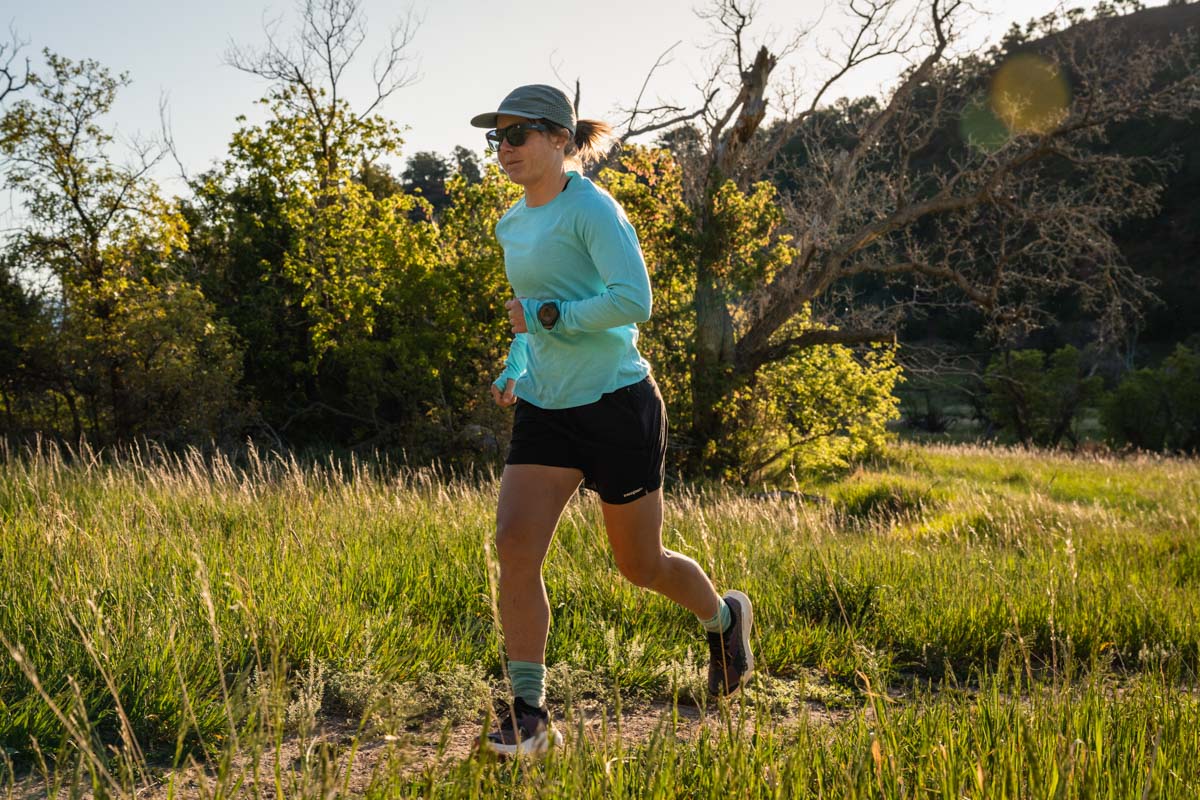
Depending on your foot shape, women-specific shoes may or may not be the best option. Photo: iRunFar/Eszter Horanyi
Toebox Size
Similar to shoe cushioning, the right toebox shape and size is a matter of personal preference. Brands generally create running shoe toeboxes that are narrow, medium, or wide. If you prefer a snug fit around your toes, you’ll want to opt for a narrow or medium toebox. The La Sportiva Levante has a wider toebox than other shoes from the brand, but it is still relatively narrow compared to the other shoes in this guide.
If you like some wiggle or splay room for your digits, pick a shoe with a wider toebox, like the Altra Lone Peak 9. Generally, high-performance shoes designed for technical trails have a narrower toebox, while shoes designed for long distances have a wider toebox.
Cushion
While cushioning is a matter of personal preference, generally, higher-cushioned shoes allow you to run longer distances, and lower-cushioned shoes provide a higher level of ground feel and snappiness. The right amount of cushion is the amount that feels the best to you and is dependent on your personal running goals.
Many options are available because there are many variations in runner body shapes and sizes, running gaits, and personal preferences. A runner training for a five-hour marathon will likely prefer a different amount of cushion and shoe feel than a runner training for an 18-minute 5k or a mountain runner looking to descend technical trails confidently. On the trail side, the Hoka Speedgoat 6 is a maximally cushioned trail shoe, while the Altra Lone Peak 9 rides much closer to the ground.
While more cushion will feel softer and more comfortable, it will come at the cost of reducing your ability to feel slight variations in the ground underneath your feet. Meanwhile, minimalist shoes with very little cushion will let you feel every pebble underfoot, but — ouch!
Arch Support
Every person’s feet and ankles move slightly differently throughout the various parts of their gait, and everyone’s arch has a unique shape. A foot’s arch will collapse slightly during a stride to absorb shock. If an arch collapses too much, the entire foot and ankle roll inward, which is called overpronation.
People who overpronate often have issues with their ankles, Achilles tendons, shins, knees, and/or hips. If you’re an overpronator, check out other shoe options in our Best Stability Running Shoes guide.
The shape of your arch and how it moves throughout your stride determines the level of arch support and stability you need in a shoe. Visiting a running store to have your gait analyzed is the best way to determine if you need extra arch support to stay injury-free and running comfortably. All the shoes in this guide, including our favorite road shoe, the Asics Novablast 5, are neutral shoes.
Stability Versus Neutral Shoes
Neutral shoes allow the feet to move and flex naturally, while stability shoes guide the foot through the stride and reduce overpronation. If possible, have an expert at a local running specialty store examine your gait before purchasing running shoes.
Most people pronate some, but if you overpronate, where your feet roll significantly inward after impact with the ground, you might consider a stability shoe for road running. Stability shoes might also help if you are prone to Achilles tendinitis, runner’s knee, or shin splints. Since foot strikes vary so much while running on trail, it’s harder to correct for overpronation, and there are no stability-focused shoe options for trail running.
Our favorite neutral road running shoes are the Asics Novablast 5.
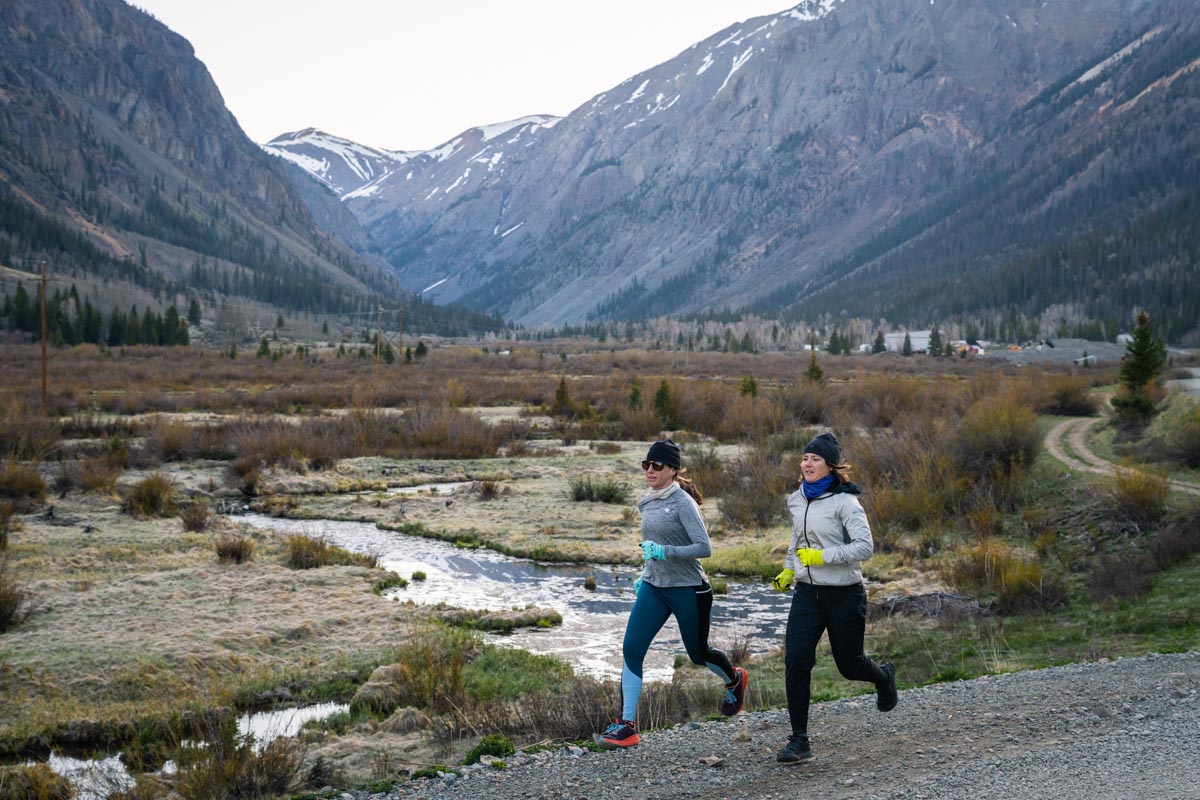
Women’s shoes are generally a bit narrower than men’s, especially in the heel area. Photo: iRunFar/Eszter Horanyi
Drop
The heel-to-toe drop is the difference in stack height of a shoe between the heel and the toe. Stack height is the distance between your foot and the ground, including the midsole and outsole. Typical heel-to-toe drop falls in the 6- to 10-millimeter range, while there are definitely higher and lower options. The Hoka Speedgoat 6 and Asics Novablast 5, which are both shoes that will work for a lot of different people, have 6- and 8-millimeter drops, respectively.
Drop is a personal preference, though your body and running stride might dictate the amount you need. For example, if you’re a hard heel striker, a higher heel stack height and drop might feel better and help with a smoother transition from the heel to the front of your foot.
On the other hand, a lower drop can help lengthen posterior muscles and tendons, such as the glutes and hamstrings, and alleviate lower back tightness. That said, a lower drop shoe probably isn’t best if you have had Achilles tendon issues or chronically tight calf muscles.
The shoes in this guide range from the zero-drop Altra Lone Peak 9 to the 8-millimeter drop of the Merrell Antora 4 and the Asics Novablast 5. If you’re transitioning to a shoe with a different amount of drop than you’re used to, it’s important to change gradually by slowly cycling the new shoe into your rotation.

Shoe companies are starting to consider the different anatomies of women and adjust shoes to fit better. Photo: iRunFar/Eszter Horanyi
Running Volume
Running volume directly influences how many running shoes you purchase each year and how many different running shoes you rotate through at a given time. If your primary activity is running and you do it consistently, you may cover anywhere from 1,200 to 2,500 miles or more per year. That mileage alone will easily take you through five to eight pairs of running shoes yearly.
If that sounds like you, you probably run enough that it’s worth keeping a few different styles of shoes on hand at a given time — perhaps a pair for the trails, like the Hoka Speedgoat 6, and one for the roads, like the Asics Novablast 5, and maybe some dedicated shoes for workouts and races or highly cushioned recovery run shoes. If you regularly do runs that involve both pavement and dirt, you might want to try a hybrid shoe like the Merrell Antora 4 that can handle both surfaces with ease.
On the other hand, if you’re running a couple of times per week or running to supplement another primary sport, like ski touring, cycling, or rock climbing, you don’t necessarily need a quiver of running shoes. Instead, choose a high-quality pair that fits well and suits your specific needs, whether you’re running on roads, trails, or both. Then, keep track of the miles you put on your shoes or monitor their wear so that you’re ready to replace them when they’ve worn out. Running in worn-out shoes is a quick way to get injured.
Running Speed
Running speed is relative, but how you like to feel when you run can influence the style of shoes that you choose. If you love to feel fast and light, regardless of your actual pace, opt for a shoe with a firmer cushion that will feel bouncy and responsive.
If you prefer to run at a relaxed, leisurely pace and prioritize comfort above all else, choose shoes with more cushion and a softer, more plush midsole, even though you’ll lose responsiveness and ground feel. If you like to run at a variety of different paces, like many of us, go with a shoe like the Asics Novablast 5 for roads or the Hoka Speedgoat 6 for trails, as they balance comfort and rebound well. Alternatively, keep a few different shoes in your rotation to pick the best shoe for your desired experience on a particular day.
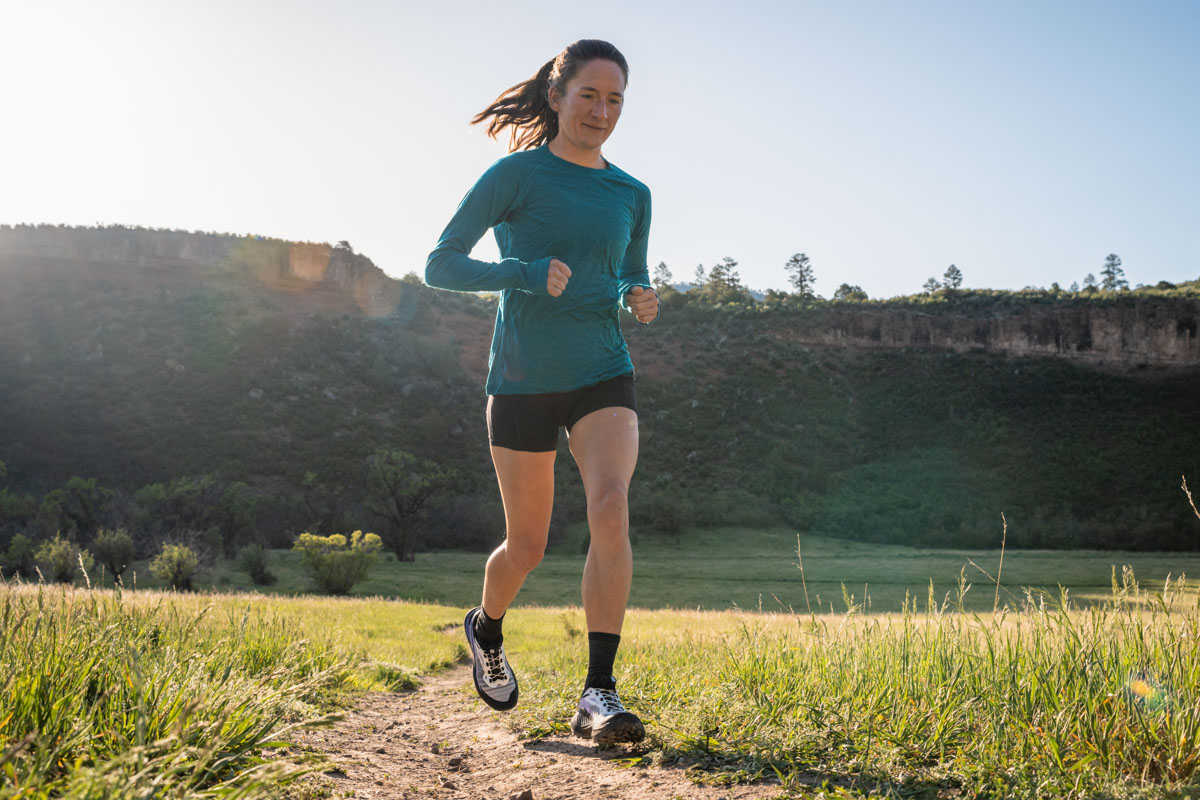
The iRunFar team tested a variety of shoes to find the best women-specific shoes on the market. Photo: iRunFar/Eszter Horanyi
Why You Should Trust Us
This guide to the best running shoes for women has been compiled using the expertise and testing experience of the iRunFar team, supplemented by extensive research by author Alli Miles and input from seasoned running shoe experts.
We began by researching the running shoe market and compiling a list of women-specific running shoes, bestsellers, and other top-rated women’s shoes. We also combed our internal records of testing feedback from iRunFar’s women’s shoe testers. Finally, we polled our friends who run in women’s shoes and inquired with our running peers about their experiences with women’s running shoes.
With this information, we narrowed down a list of 18 top picks and sent as many as possible to our women’s shoe testers. Over several weeks, our team of testers took these shoes to the roads and trails and put dozens (and sometimes hundreds) of miles on each style.
After putting at least 100 miles on their top picks, our testers rated each shoe according to overall performance, comfort, responsiveness, durability, and more. With all this information, we further narrowed our list of the best running shoes for women in this guide. We continue to test women-specific shoes and update this guide as other high-quality options appear on the market.
Frequently Asked Questions About Running Shoes for Women
How long do running shoes last?
Most running shoes, whether designed for the road or the trail, have a range of 300 to 500 miles. Depending on your mileage and whether you use one pair of shoes at a time or rotate a few pairs, it could take anywhere from three to six months to run through a pair of shoes.
The exact mileage you get out of your shoes depends on multiple factors, including the shoe’s fit, your body size, how and where you run, and whether you wear your shoes for activities other than running. If your shoes are too snug, you’ll likely punch holes in the upper sooner than if you have a well-fitting shoe that gives your foot room to relax.
How do you know when your shoes need replacing? If you’re not into tracking your miles, the shoe will let you know when it’s time for a fresh pair. Even if the upper is still in good shape, the outsole may start to look smooth and worn down. Aside from visual clues, the midsole foam will begin to feel flat, firm, and packed out.
This becomes especially apparent in well-cushioned shoes like the Asics Novablast 5 or the Hoka Speedgoat 6. The shoe will feel less comfortable, and your feet might feel tired or sore after your run. You also may be able to feel the ground more than you did when the shoes were brand new.

We tested trail shoes in all sorts of environments to find the best option for women. Photo: iRunFar/Alli Miles
What is a good beginner running shoe?
If you’re new to running, the best thing to do is to visit your local specialty running shop. There, they’ll be able to measure your feet, discuss the different types of surfaces you want to run on, and analyze your gait.
A running expert can assess your arch height and help you choose a shoe that suits your feet, running style, and goals. If you have especially wide or narrow feet, a running shop where you can try on multiple pairs of shoes, both men’s and women’s, can prove invaluable.
If you don’t have a running shop in your area, several shoes will fit a wide range of runners. Starting with a fairly middle-of-the-road shoe like the Hoka Speedgoat 6 or Asics Novablast 5 will let you learn about what you like and don’t like in shoes, so that you can purchase your next pair with more information. If you don’t know what type of running you’re planning on doing, getting a road-to-trails shoe like the Merrell Antora 4 will let you run comfortably on a variety of surfaces.
How many shoes should I rotate through at once?
The number of shoes you keep at any given time depends on personal preference, budget, and space on your shoe rack. On the one hand, you really only need one pair of running shoes, and there are tons of options out there that work well for everyday running, workouts, and races, and some, like the Hoka Speedgoat 6, La Sportiva Levante, and Merrell Antora 4, can hold their own on both roads and trails, and the Asics Novablast 5 is our favorite road shoe.
If you choose one pair of shoes for all your running, the best bet is to pick a comfortable style with moderate cushioning, decent grip, and proven durability.
At the other end of the spectrum of people who only want one pair of shoes are the gear testers at iRunFar. Because we run almost every day and love to study, test, and examine the features and technology of each shoe style, many of us end up with too many shoes to count. There are specialized shoes for everything: plush cushioned shoes for everyday easy runs, springy and responsive workout shoes, super shoes for racing, trail shoes for smooth trails, options for technical mountain trails, waterproof shoes for snow and mud, and so on.
While trying different kinds of running shoes is fun, it can become an expensive habit. Most dedicated runners will do well with a few pairs of shoes in rotation at any given time. An excellent place to start is with a pair of everyday training shoes that can perform well on roads, gravel, and light dirt, a dedicated pair for workouts and racing, and a pair of trail shoes that can withstand more rugged terrain.
Are certain running shoes better for women?
Generally, women’s feet are shaped a little differently from men’s — the key difference is that women tend to have narrower heels. As a result, women’s running shoes are shaped a little wider in the front and narrower in the back, while men’s running shoes have a more uniform width from front to back. Additionally, men’s shoes tend to run slightly wider overall than women’s shoes.
As a result, an average woman with an average fit will likely get a better fit in a running shoe with a women-specific last. However, women with wide feet may find that men’s sizing fits their feet better. Similarly, a man with narrow feet may prefer the fit of a woman’s shoe. Finally, many running brands offer unisex shoes.
More recently, some brands have started introducing women-first running shoes. These shoes, including the La Sportiva Levante, are crafted from the ground up with women’s needs and preferences at the forefront rather than adapting a men’s shoe to women’s feet.
Choosing running shoes is personal, and factors like training goals, experience, history of injury, running gait, foot shape, style preferences, and budget are all at play. There’s good reason for the variety of running shoes on the market today, including the wide range of midsole foams, stack heights, heel-to-toe drops, toebox shapes, outsole rubber components, and more.
Whether you want the wide toebox and zero-drop of the Altra Lone Peak 9 or the cushion of the Asics Novablast 5, you can probably find a shoe with the features you’re looking for. Ultimately, the best shoe for any individual runner is the one that fits well, feels comfortable, inspires confidence, and motivates that person to get out the door for a run!
Ultimately, there is no single “best” shoe — it’s simply about having options and knowing how to choose the best running shoe for you.

Determining the type of terrain you run on most frequently can help you choose the best shoe for your needs. Photo: iRunFar/Eszter Horanyi
Is there a difference between men’s and women’s versions of running shoes?
Not all brands use a different last for their men’s and women’s shoes, and the brands that do don’t do it for all of their shoes. Altra has been a leader in creating women’s lasts that consider some anatomical differences between men and women, including an overall narrower foot, an even narrower heel, and a differently shaped arch.
Hoka also uses a narrower last for its women’s shoes and offers wide sizing options in women’s colorways and sizes built around the men’s last. Other shoes are only available in a unisex option. The Merrell Antora 4 has a men’s counterpart called the Merrell Nova 4.
Call for Comments
- Do you wear gender-specific or unisex running shoes?
- What features or aspects are most important to you when wearing women’s shoes? Do you have a favorite women’s running shoe?
